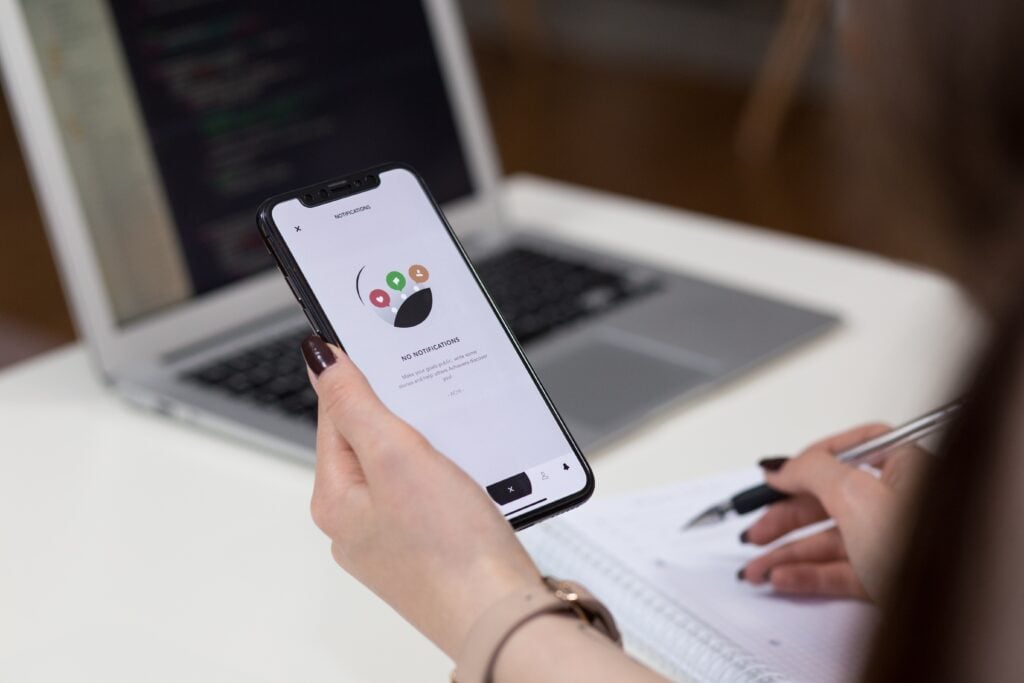Every interaction with your app is a chance to build trust—or break it. But trust isn’t a feature you can ship; it’s something you earn through consistency, reliability, and real-world resilience. That’s where Quality Assurance (QA) comes in.
At Sonin, QA isn’t just a final checkbox before launch. It’s a strategic, ongoing process that ensures our products meet the highest standards from the very first sprint to every post-release update.
How We Integrate QA from Day One
Building a high-quality product doesn’t start with code—it starts with a mindset. At Sonin, we view QA as a strategic discipline, not just a function. It’s embedded into every stage of development to ensure we’re building the right thing, the right way, from day one.
This proactive approach helps us catch potential issues early, align our testing strategy with user expectations, and ensure our clients launch with confidence. By involving QA from the very beginning, we can design smarter test cases, spot risky assumptions before they become problems, and create a strong foundation for long-term product success.
Quality Assurance at Sonin is woven into every phase of development. Before a single line of code is written, QA is already in motion:
- Planning: QA collaborates with project managers and designers to understand the core objectives. Early involvement means we can identify risk areas and build robust test cases that reflect both business logic and user journeys.
- Development: As features are developed, QA validates functionality in real time, uncovering edge cases and confirming performance.
- Pre-launch: A combination of regression testing, performance validation, and security checks ensures the product is stable, scalable, and secure.
- Post-launch: QA doesn’t stop at go-live. We continuously monitor and test to ensure products evolve smoothly.
“QA is not just about testing a product,” says Dan Reid, QA Test Manager. “It’s about learning and adapting to ensure utmost confidence in the system. It’s a continuous cycle of improvement.”

A Balanced Approach to Testing
At Sonin, we recognise that no single approach to testing fits all scenarios. Different stages of development, different types of features, and even different user behaviours require tailored testing strategies. That’s why we combine the structure of predefined test cases with the adaptability of exploratory testing.
Our hybrid approach balances both to ensure we don’t just tick boxes—we uncover the unexpected. This gives us the consistency needed for regression testing and the agility to spot new issues in design-heavy or high-risk areas.
Fisayo Runsewe, QA Test Lead explains: “Exploratory testing helps us uncover the unexpected—especially in new features or design-heavy areas. But scripted test cases give us stability across iterations. We need both.”
Meanwhile, Dan adds: “We use a full suite of testing types to ensure no stone is left unturned. That includes system integration, end-to-end testing, and user acceptance testing. But we also perform non-functional testing like usability and compatibility checks.”
Our toolkit includes:
- Postman (API validation)
- BrowserStack (cross-device/browser testing)
- JIRA & GitHub (defect tracking)
- Android Studio & Xcode (native app testing)
- Jam (streamlined bug reporting)

Real-World QA in Action
Real QA value shines when products scale fast and complexity increases. At Sonin, our QA team plays a critical role in maintaining confidence and consistency—especially during periods of rapid change.
Dan shares how the team evolved their process on a long-running client project: “As the Connells platform grew, so did the number of new features—and with it, the potential for regressions. New features were regularly affecting existing ones, and we needed a better way to manage quality across the board.”
To solve this, Dan and the QA team introduced structured regression levels based on the size and impact of upcoming features. “This meant each release got the right level of test coverage depending on the complexity. We also developed a regression feature pack—a complete list of existing and new features—to give us a clear test baseline every time.”
The result? A 50% reduction in post-release issues.
Meanwhile, Fisayo recalls catching a critical crash scenario just before launch. “During testing, I found that the app would crash when a user opened appointments with zero clients. It wasn’t something we’d normally catch, because the backend always populated appointments with a fixed range of client values.”
To investigate further, she worked closely with the developers. “We created a staging scenario where appointments had zero clients and reproduced the crash. Then the dev team implemented a validation step so the issue couldn’t happen in production.”
Because of that early intervention, the app launched smoothly, and bug reports dropped significantly.
Manual Testing: Still Essential
Automation is powerful, but some issues only surface when real people interact with the product in unpredictable ways. Manual testing brings a layer of human intuition and flexibility that automation simply can’t replicate.
“Manual testing is just as important as automated testing because it brings human intuition, flexibility and real-world context into the quality assurance process,” says Dan.
He recalls a past Sonin project where initial tests showed correct data—but something was off. “We weren’t capturing a realistic mix of results across varying connectivity strengths because all testing was conducted under the same network conditions and in a single location.”
To address that, the team ran a dedicated sprint to test the app on the move—passing through areas with fluctuating data connectivity. “This approach better reflected real-world usage and uncovered several bugs that would have gone unnoticed under static testing.”
Fisayo adds: “During manual testing for a selection order feature, we uncovered a hardcoded reference number in the confirmation modal. Automated tests passed—because the structure was correct—but the value didn’t match the backend-generated order ID.”
That inconsistency was fixed and a regression test was added. “This discovery prevented downstream confusion and reinforced the value of visually validating dynamic content,” she explains.
Manual testing uncovers the unknowns—things automation can’t anticipate but that users absolutely notice.

Overcoming QA Challenges
Even with strong processes, QA is never one-size-fits-all. From device fragmentation to surges in user activity, our team anticipates and tackles the challenges that can impact quality and performance.
“Clients or users sometimes report problems that happen only on a specific phone model or OS version,” says Dan. “With so many variables, we use tools like BrowserStack to replicate their environment and verify the issue—without needing every device.”
Fisayo highlights performance under pressure as another challenge. “One app we tested sent large push notifications to thousands of users. It worked fine in normal use, but we needed to know if it could handle sudden spikes.”
Through simulations, the team discovered delays in the notification queue and optimised the infrastructure. “That meant users got their alerts promptly—even when traffic surged.”
Misconceptions About QA
“A common misunderstanding is that QA is only necessary at the end of development,” says Dan. “Or that it’s just about finding bugs. But QA is a strategic process that runs across the whole lifecycle.”
He continues: “Clients often think developers can handle all the testing. But QA brings a different mindset—one that’s focused on edge cases, risk, and long-term stability.”
Fisayo adds: “I came into QA without a traditional background, and it showed me how misunderstood the role is. It’s not about ticking boxes—it’s about making sure things work how they should.”
She explains: “Good QA requires curiosity and empathy. We look at the product as a whole. We ask ‘what if?’ and spot issues in logic, accessibility, or user flow that seem fine on paper but break down in practice.”
Together, Dan and Fisayo show that great QA isn’t just a safety net—it’s a strategic advantage.
Final Thoughts: QA Is a Strategic Advantage
Quality Assurance is not a formality. It’s the difference between delivering a working product and delivering the rightproduct.
At Sonin, our QA team is the critical bridge between what a product promises and how it performs in the hands of real users. With their combined process expertise and user-first perspective, Dan and Fisayo ensure every product we build is built right.
Want to launch with confidence? Let’s talk about how QA can support your digital product.